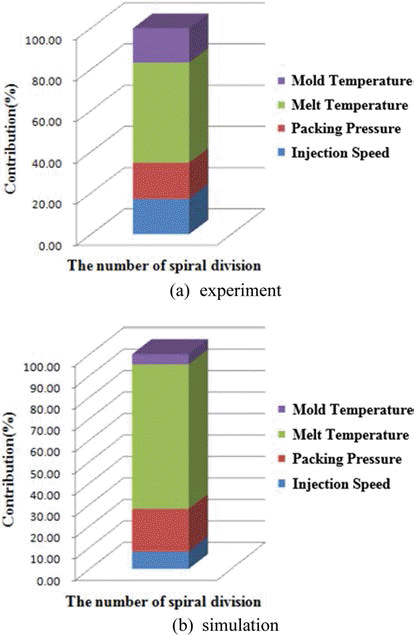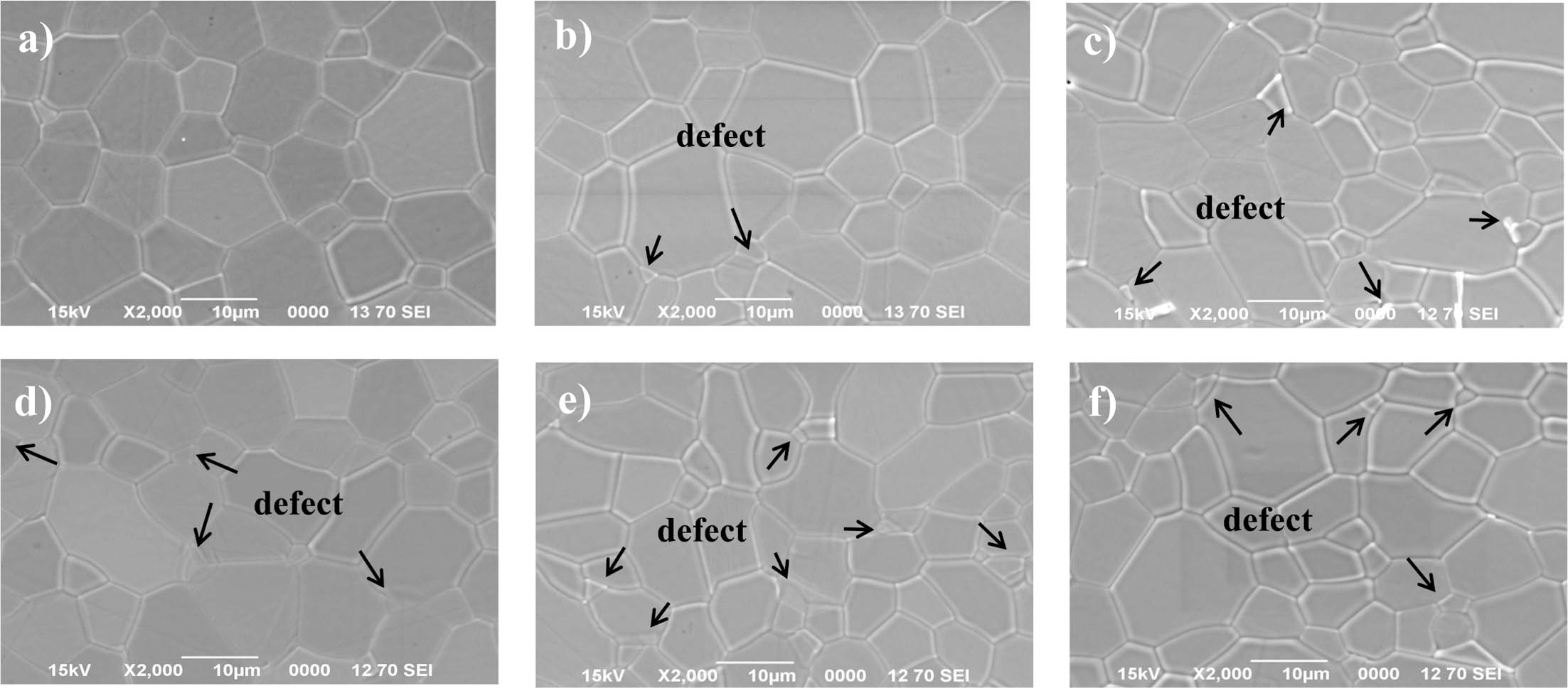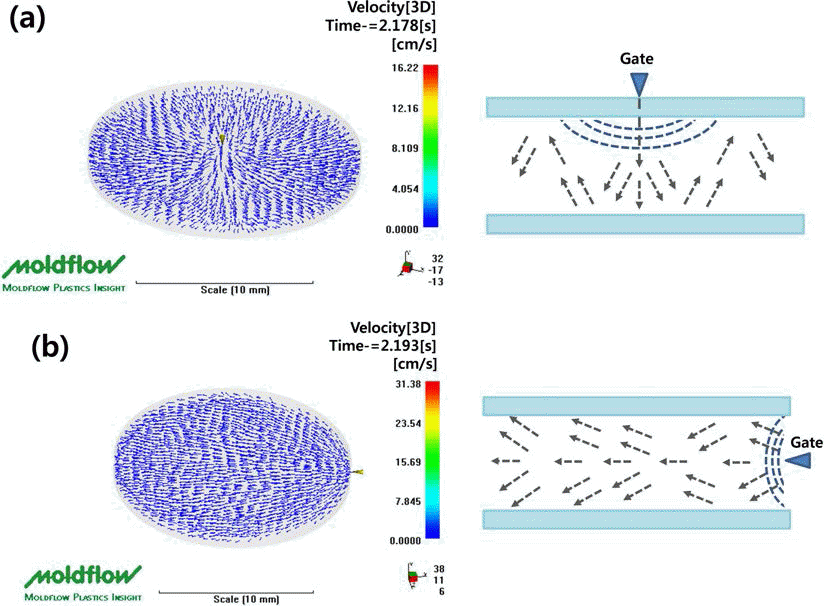Search
- Page Path
- HOME > Search
- [English]
- Optimization of Process Condition for Fe Nano Powder Injection Molding
- Joo Won Oh, Won Sik Lee, Seong Jin Park
- J Korean Powder Metall Inst. 2017;24(3):223-228. Published online June 1, 2017
- DOI: https://doi.org/10.4150/KPMI.2017.24.3.223

- 423 View
- 2 Download
- 3 Citations
-
 Abstract
Abstract
 PDF
PDF Nanopowders provide better details for micro features and surface finish in powder injection molding processes. However, the small size of such powders induces processing challenges, such as low solid loading, high feedstock viscosity, difficulty in debinding, and distinctive sintering behavior. Therefore, the optimization of process conditions for nanopowder injection molding is essential, and it should be carefully performed. In this study, the powder injection molding process for Fe nanopowder has been optimized. The feedstock has been formulated using commercially available Fe nanopowder and a wax-based binder system. The optimal solid loading has been determined from the critical solid loading, measured by a torque rheometer. The homogeneously mixed feedstock is injected as a cylindrical green body, and solvent and thermal debinding conditions are determined by observing the weight change of the sample. The influence of the sintering temperature and holding time on the density has also been investigated. Thereafter, the Vickers hardness and grain size of the sintered samples have been measured to optimize the sintering conditions.
-
Citations
Citations to this article as recorded by- Investigation of stainless steel 316L/zirconia joint part fabricated by powder injection molding
Chang Woo Gal, Sang Soo Han, Jun Sae Han, Dongguo Lin, Seong Jin Park
International Journal of Applied Ceramic Technology.2019; 16(1): 315. CrossRef - Fabrication and properties of Si3N4 based ceramics using combustion synthesized powders
Chang Woo Gal, Gi Woung Song, Woon Hyung Baek, Hyung Kyu Kim, Dae Keun Lee, Ki Wook Lim, Seong Jin Park
International Journal of Refractory Metals and Hard Materials.2019; 81: 325. CrossRef - Powder Injection Molding Process in Industrial Fields
Joo Won OH, Chang Woo GAL, Daseul SHIN, Jae Man PARK, Woo Seok YANG, Seong Jin PARK
Journal of the Japan Society of Powder and Powder Metallurgy.2018; 65(9): 539. CrossRef
- Investigation of stainless steel 316L/zirconia joint part fabricated by powder injection molding
- [English]
- Development of Powder Injection Molding Process for a Piezoelectric PAN-PZT Ceramics
- Jun Sae Han, Dong Yong Park, Dongguo Lin, Kwang Hyun Chung, Ravi Bollina, Seong Jin Park
- J Korean Powder Metall Inst. 2016;23(2):112-119. Published online April 1, 2016
- DOI: https://doi.org/10.4150/KPMI.2016.23.2.112

- 414 View
- 6 Download
- 4 Citations
-
 Abstract
Abstract
 PDF
PDF A powder injection molding process is developed and optimized for piezoelectric PAN-PZT ceramics. Torque rheometer experiments are conducted to determine the optimal solids loading, and the rheological property of the feedstock is evaluated using a capillary rheometer. Appropriate debinding conditions are chosen using a thermal gravity analyzer, and the debound specimens are sintered using sintering conditions determined in a preliminary investigation. Piezoelectric performance measures, including the piezoelectric charge constant and dielectric constant, are measured to verify the developed process. The average values of the measured piezoelectric charge constant and dielectric constant are 455 pC/N and 1904, respectively. Powder injection molded piezoelectric ceramics produced by the optimized process show adequate piezoelectric performance compared to press-sintered piezoelectric ceramics.
-
Citations
Citations to this article as recorded by- Study on Rheological Behavior and Mechanical Properties of PMN–PZT Ceramic Feedstock
Jae Man Park, Jun Sae Han, Joo Won Oh, Seong Jin Park
Metals and Materials International.2021; 27(5): 1069. CrossRef - Investigation of stainless steel 316L/zirconia joint part fabricated by powder injection molding
Chang Woo Gal, Sang Soo Han, Jun Sae Han, Dongguo Lin, Seong Jin Park
International Journal of Applied Ceramic Technology.2019; 16(1): 315. CrossRef - Fabrication of pressureless sintered Si3N4 ceramic balls by powder injection molding
Chang Woo Gal, Gi Woung Song, Woon Hyung Baek, Hyung Kyu Kim, Dae Keun Lee, Ki Wook Lim, Seong Jin Park
Ceramics International.2019; 45(5): 6418. CrossRef - Experimental analysis for fabrication of high-aspect-ratio piezoelectric ceramic structure by micro-powder injection molding process
Jun Sae Han, Chang Woo Gal, Jae Man Park, Jong Hyun Kim, Seong Jin Park
Materials Research Express.2018; 5(4): 046303. CrossRef
- Study on Rheological Behavior and Mechanical Properties of PMN–PZT Ceramic Feedstock
- [English]
- Development of Powder Injection Molding Process for Fabrication of Glass Component
- Dongguo Lin, Junghyun Lee, Seong Jin Park
- J Korean Powder Metall Inst. 2016;23(1):26-32. Published online February 1, 2016
- DOI: https://doi.org/10.4150/KPMI.2016.23.1.26

- 1,161 View
- 12 Download
- 8 Citations
-
 Abstract
Abstract
 PDF
PDF Powder injection molding (PIM), which combines the advantages of powder metallurgy and plastic injection molding technologies, has become one of the most efficient methods for the net-shape production of both metal and ceramic components. In this work, plasma display panel glass bodies are prepared by the PIM process. After sintering, the hot isostatic pressing (HIP) process is adopted for improving the density and mechanical properties of the PIMed glass bodies. The mechanical and thermal behaviors of the prepared specimens are analyzed through bending tests and dilatometric analysis, respectively. After HIPing, the flexural strength of the prepared glass body reaches up to 92.17 MPa, which is 1.273 and 2.178 times that of the fused glass body and PIMed bodies, respectively. Moreover, a thermal expansion coefficient of 7.816 × 10−6/°C is obtained, which coincides with that of the raw glass powder (7.5-8.0 × 10−6/°C), indicating that the glass body is fully densified after the HIP process.
-
Citations
Citations to this article as recorded by- Fabrication and characteristics of Li2TiO3 pebbles manufactured by using powder injection molding (PIM) process
Young Ah Park, Yi-Hyun Park, Mu-Young Ahn, Young Soo Yoon
Journal of Nuclear Materials.2024; 597: 155140. CrossRef - Combined simulation of micro and nanoparticles in RF inductively coupled plasma torches with the variations of metallic species and feeding nozzle location
Cheongbin Cheon, Ho Jun Kim, Hae June Lee
Japanese Journal of Applied Physics.2023; 62(SA): SA1014. CrossRef - High-throughput injection molding of transparent fused silica glass
Markus Mader, Oliver Schlatter, Barbara Heck, Andreas Warmbold, Alex Dorn, Hans Zappe, Patrick Risch, Dorothea Helmer, Frederik Kotz, Bastian E. Rapp
Science.2021; 372(6538): 182. CrossRef - Controlling the sintering response in the development of multilayered components produced via powder injection molding route—a review
O. J. Ojo-kupoluyi, S. M. Tahir, T. T. Dele-Afolabi, M. S. Anuar
The International Journal of Advanced Manufacturing Technology.2020; 107(9-10): 3755. CrossRef - Fabrication of pressureless sintered Si3N4 ceramic balls by powder injection molding
Chang Woo Gal, Gi Woung Song, Woon Hyung Baek, Hyung Kyu Kim, Dae Keun Lee, Ki Wook Lim, Seong Jin Park
Ceramics International.2019; 45(5): 6418. CrossRef - Thermal decomposition behavior and modeling of PMN-PZT ceramic feedstock with varying binder compositions
Jae Man Park, Jun Sae Han, Chang Woo Gal, Joo Won Oh, Dongguo Lin, Jaebum Noh, Kunal H Kate, Sundar V Atre, Youngmoo Kim, Seong Jin Park
Materials Research Express.2019; 6(6): 065316. CrossRef - Powder Injection Molding Process in Industrial Fields
Joo Won OH, Chang Woo GAL, Daseul SHIN, Jae Man PARK, Woo Seok YANG, Seong Jin PARK
Journal of the Japan Society of Powder and Powder Metallurgy.2018; 65(9): 539. CrossRef - Optimization of Process Condition for Fe Nano Powder Injection Molding
Joo Won Oh, Won Sik Lee, Seong Jin Park
Journal of Korean Powder Metallurgy Institute.2017; 24(3): 223. CrossRef
- Fabrication and characteristics of Li2TiO3 pebbles manufactured by using powder injection molding (PIM) process
- [English]
- Simulation and Experiment of Injection Molding Process for Superalloy Feedstock
- Im Doo Jung, Youngmoo Kim, Seong Jin Park
- J Korean Powder Metall Inst. 2015;22(1):1-5. Published online February 1, 2015
- DOI: https://doi.org/10.4150/KPMI.2015.22.1.1

- 328 View
- 3 Download
- 2 Citations
-
 Abstract
Abstract
 PDF
PDF Powder injection molding is an important manufacturing technology to mass produce superalloy components with complex shape. Injection molding step is particularly important for realizing a desired shape, which requires much time and efforts finding the optimum process condition. Therefore computer aided engineering can be very useful to find proper injection molding conditions. In this study, we have conducted a finite element method based simulation for the spiral mold test of superalloy feedstock and compared the results with experimental ones. Sensitivity analysis with both of simulation and experiment reveals that the melt temperature of superalloy feedstock is the most important factor for the full filling of mold cavity. The FEM based simulation matches well the experimental results. This study contributes to the optimization of superalloy powder injection molding process.
-
Citations
Citations to this article as recorded by- Powder Injection Molding Process in Industrial Fields
Joo Won OH, Chang Woo GAL, Daseul SHIN, Jae Man PARK, Woo Seok YANG, Seong Jin PARK
Journal of the Japan Society of Powder and Powder Metallurgy.2018; 65(9): 539. CrossRef - Effect of Diamond Particle Size on the Thermal Shock Property of High Pressure High Temperature Sintered Polycrystalline Diamond Compact
Ji-Won Kim, Min-Seok Baek, Hee-Sub Park, Jin-Hyeon Cho, Kee-Ahn Lee
Journal of Korean Powder Metallurgy Institute.2016; 23(5): 364. CrossRef
- Powder Injection Molding Process in Industrial Fields
- [English]
- Powder Injection Molding of Translucent Alumina using Supercritical Fluid Debinding
- Hyung Soo Kim, Jong Min Byun, Myung Jin Suk, Young Do Kim
- J Korean Powder Metall Inst. 2014;21(6):407-414. Published online December 1, 2014
- DOI: https://doi.org/10.4150/KPMI.2014.21.6.407

- 295 View
- 1 Download
- 1 Citations
-
 Abstract
Abstract
 PDF
PDF The powder injection molding process having advantages in manufacturing three-dimensional precision parts essentially requires a debinding process before sintering to remove the binders used for preparing feedstock. In this study, powder injection molding of translucent alumina was performed, and carbon dioxide (CO2) is used as a supercritical fluid that makes it possible to remove a large amount of binder, which is paraffin wax. The relationship between the optical property of translucent alumina and the debinding condition (temperature and pressure) of supercritical CO2 was investigated. As temperature and pressure increased, extraction rate of the binder showed rising tendency and average grain size after sintering process was relatively fine. On the other hand, optical transmittance was reduced. As a result, the debinding condition at 50° and 20 MPa that represents the lowest extraction rate, 8.19 × 10−3 m2/sec, corresponds to the largest grain size of 14.7 μm and the highest optical transmittance of 45.2%.
-
Citations
Citations to this article as recorded by- Experimental and numerical analysis of effects of supercritical carbon dioxide debinding on Inconel 718 MIM components
Dugauguez Olivier, Agne Aboubabky, Jimenez-Morales Antonia, Torralba José Manuel, Barriere Thierry
Powder Technology.2019; 355: 57. CrossRef
- Experimental and numerical analysis of effects of supercritical carbon dioxide debinding on Inconel 718 MIM components
- [Korean]
- A study on the Powder Injection Molding of Translucent Alumina via Flowability Simulation of Powder/Binder Mixture
- Hyung Soo Kim, Jong Min Byun, Se Hoon Kim, Young Do Kim
- J Korean Powder Metall Inst. 2014;21(3):215-221. Published online June 1, 2014
- DOI: https://doi.org/10.4150/KPMI.2014.21.3.215

- 211 View
- 0 Download
-
 Abstract
Abstract
 PDF
PDF Translucent alumina is a potential candidate for high temperature application as a replacement of the glass or polymer. Recently, due to the increasing demand of high power light emitting diode (LED), there is a growing interest in the translucent alumina. Since the translucent property is very sensitive to the internal defect, such as voids inside or abnormal grain growth of sintered alumina, it is important to fabricate the defect-free product through the fabrication process. Powder injection molding (PIM) has been commonly applied for the fabrication of complex shaped products. Among the many parameters of PIM, the flowability of powder/binder mixture becomes more significant especially for the shape of the cavity with thin thickness. Two different positions of the gate were applied during PIM using the disc type of die. The binder was removed by solvent extraction method and the brown compact was sintered at 1750°C for 3 hours in a vacuum. The flowability was also simulated using moldflow (MPI 6.0) with two different types of gate. The effect of the flowability of powder/binder mixture on the microstructure of the sintered specimen was studied with the analysis of the simulation result.
TOP
 kpmi
kpmi


 First
First Prev
Prev


